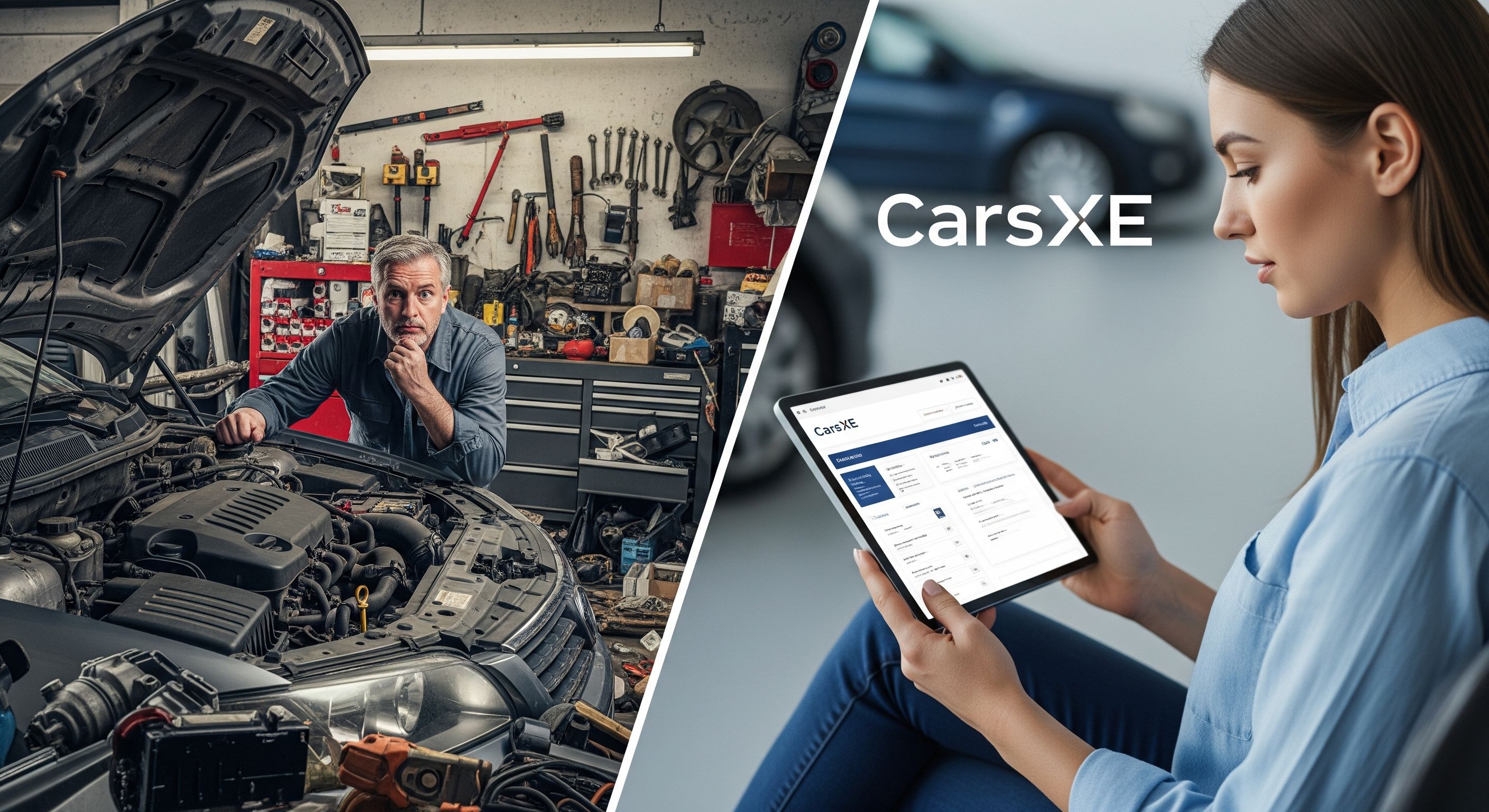The Ultimate Car Maintenance Guide: How to Find Your Schedule & Check a Used Car's Service History

Every car owner has faced the question: "When's my next oil change?" "Do I need to rotate my tires?" "How do I know if this used car was actually well-maintained?"
The world of car maintenance can feel overwhelming, full of technical terms and conflicting advice. But understanding your car's service schedule is one of the most important things you can do to protect your investment and ensure your vehicle runs smoothly for years to come.
This guide will demystify the two most crucial aspects of vehicle maintenance:
- Understanding your car’s service schedule.
- Verifying a used car’s service history (the most important step before buying!).
Part 1: Decoding Your Car’s Service Schedule
Your car's owner's manual is the definitive guide to its maintenance. It will outline a precise schedule of inspections and fluid changes based on mileage or time, whichever comes first.
While every car is different, most follow a common pattern, often referred to as the "30-60-90 schedule," meaning specific tasks are recommended at 30,000, 60,000, and 90,000-mile intervals.
Common Service Milestones by Mileage:
- Every 5,000 - 7,500 Miles:
- Oil and Oil Filter Change: This is the most frequent and most important service. It keeps your engine lubricated and clean.
- Tire Rotation: Promotes even wear and extends the life of your tires.
- Every 15,000 - 30,000 Miles:
- Engine & Cabin Air Filter Replacement: A clean air filter helps your engine breathe better and improves fuel efficiency.
- Brake Inspection: Check for wear on brake pads and rotors.
- Every 60,000 Miles:
- Fluid Changes: This is a major milestone. You'll likely need to replace fluids like brake fluid, coolant, and transmission fluid.
- Spark Plug Replacement: Spark plugs are vital for a smooth-running engine and are a common replacement around this mileage.
- Tire Replacement: Most tires are rated for around 60,000 miles.
- Every 90,000 - 100,000 Miles:
- Timing Belt Replacement: If your car has a timing belt (not a chain), replacing it around this mileage is critical to prevent catastrophic engine failure.
Part 2: The Used Car Buyer’s Ultimate Question
If you’re buying a used car, the seller will often tell you it’s been “regularly serviced” or that it has a “full-service history.” But how can you be sure?
A car with a documented history of regular maintenance is a much safer investment and holds its value better. A car with no records or major gaps in its history is a ticking time bomb.
Here’s how you can verify a used car’s service history:
Method 1: The Paperwork Trail (The Seller's Story)
- Ask for Records: Request the car's service book, physical receipts, and any invoices for major repairs. A seller with a stack of organized records is a good sign.
- Look for Stickers: Check the driver's side door jamb or inside the windshield for oil change stickers. These will show the date and mileage of the last service.
- Check the Owner's Manual: Some manuals have a logbook at the back for owners to fill out.
However, this method is only as good as the previous owner's diligence (and honesty). A clever seller can easily fake records or claim they were "lost."
Method 2: The Ultimate Verification (The VIN’s Story)
The only truly reliable way to know a car’s past is by running a comprehensive VIN report. A VIN is a 17-character code that acts as a car's unique fingerprint, and it's your direct link to its official history.
A VIN report from a trusted provider like CarsXE aggregates data from thousands of sources, including repair shops, dealerships, and insurance companies. This gives you a clear, objective picture of the car's past.
Here’s what a CarsXE VIN report will tell you about maintenance:
- Service & Repair Records: See dates, mileage, and types of services performed on the vehicle. This includes everything from routine oil changes to major repairs.
- Mileage Verification: The report will show the mileage at the time of each recorded service. This is your best defense against odometer fraud. If the odometer reads 80,000 miles but a service record from last year showed 100,000, you know something is wrong.
- Key Replacements: See if essential parts were replaced, such as a timing belt, which indicates a responsible owner.
- Open Recalls: A VIN report will tell you if the car has any unresolved safety recalls. These are manufacturer-issued notices for safety-related defects, and a responsible owner would have had them repaired.
Your Action Plan: Trust the VIN, Not Just the Seller
Whether you’re buying a used car or trying to stay on top of your current one, a solid maintenance plan is essential. For a used car, your best bet is to combine a physical inspection with a comprehensive VIN report.
Your 3-Step Action Plan:
- Find the VIN: It’s on the dashboard by the windshield, on the driver's side door jamb, and on the title.
- Run a CarsXE Report: Use the VIN to get an instant report on all the car’s history, including maintenance, accidents, and title brands.
- Cross-Reference: Compare the seller's claims with the facts in the VIN report. A consistent history of service in the report is the proof you need to buy with confidence.
Don't guess or hope for the best. A smart buyer knows that the key to a reliable car lies not just in its present condition, but in its past.